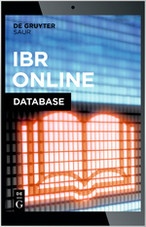- 27 December 2016
Article/Publication Details
Views: 3568
THE “NICHTS DER WELT”: ON ANXIETY AND TRUST
| Title in the language of publication: | LE “NICHTS DER WELT”: DE L’ANGOISSE ET LA CONFIANCE |
| Author: | Ado Huygens |
| Issue: |
HORIZON. Studies in Phenomenology. Vol. 5, №2 (2016), 122–141 |
| Language: | French |
| Document type: | Research Article |
| DOI : 10.18199/2226-5260-2016-5-2-122–141 | PDF (Downloads: 3014) |
Abstract
The author describes a limit situation in which he found himself during his journey in Egypt.
He describes this experience as a kind of panic attack and associates this experience with what
Heidegger called Grundstimmung. As a Daseinsanalyst, the author decided not to avoid this
exceptional and terrifying inner turmoil but, on the contrary, to describe day after day his feelings,
emotions, the sense of strangeness and homelessness while at the same time rereading “Sein und
Zeit”. The author reports being able to experience in his flesh, beyond any theoretical approach, what
Heidegger puts into one of his main concepts, Angst. This concept delivers the uncanny experience
of the meaninglessness of existence, of “not-being-at-home”. He describes his experience which
permitted him to vividly explore through Heidegger’s Daseinsanalysis the way a human being
lets natural entities be, the way he has to face his finitude through Angst, and finally, the way
Dasein is confronted with “nothingness”. Nevertheless, the author wonders, whether the feeling of
“unfamiliarity” or “errancy” might also be the source of the “clearing” and lead us to experience
of authentic life? Step by step, Angst is questioning “trust”. What does it mean to trust the world or
oneself? This article intertwines theory and Erlebnis, such that living experience is manifested by
Heidegger’s hermeneutic and, conversely, Heidegger’s hermeneutic is embodied in living experience.
This article bridges an ontic journey in Egypt and an ontological journey in which Dasein’s Being
unfolds.
Key words
Angst-Anxiety, not-being-at home, nothingness, unfamiliar, finitude, meaninglessness, trust, openness, Gelassenheit-serenity, clearing.
References
- Amphoux, P. (Ed.). (1996). Le Sens du Lieu: Topos, Logos, Aisthèsis. Conference publication. Bruxelles: Ousia.
- Chretien, J.-L. (1992). L’appel et la réponse. Paris: Éditions de minuit.
- Cabestan, P., & Dastur, F. (2011). Daseinsanalyse. Paris: Vrin.
- Heidegger, M. (1993). Sein und Zeit. Tübingen: Max Niemeyer.
- Heidegger, M. (2005). Être et Temps. Paris: Authentica.
- Holzhey-Kunz, A. (n.d.). Daseinsanalyse (traduction française en cours par Laurence Defago). Non encore publié.
- Husserl, E. (1964). Leçons pour une phénoménologie intime du temps. Paris: PUF.
- Huygens, A. (2008). Penser l’existence, exister la pensée: De l’humanitude, de l’amour, au jour de la phénoménologie clinique. Paris: Encre Marine.
- Jonckheere, P. (2009). Psychiatrie phénoménologique. Le cercle herméneutique. Paris: Vrin.
- Maldiney, H. (1991). Penser l’homme et la folie. À la lumière de l’analyse existentielle et de l’analyse du destin. Grenoble: Jerome Millon.
- Sallignon, B. (1994). Le seuil, un chiasme intime-dehors. In: Le sens du Lieu. Bruxelles: Ousia.

This work is licensed under a Creative Commons Attribution-NonCommercial 4.0 International License.

|
|
|
|
|

|
|
|
|
|

|
|
|
|
|
|
|
|
|
|
|
|
|
|
|
|
|
|
|
|
|
|

|
|
|
|
|
|
|
|
|
|
|
|
|
|
|
|
|
|
|
|
|
|
|
|
|
|
|
|

|

|
Social networks:





